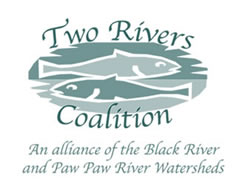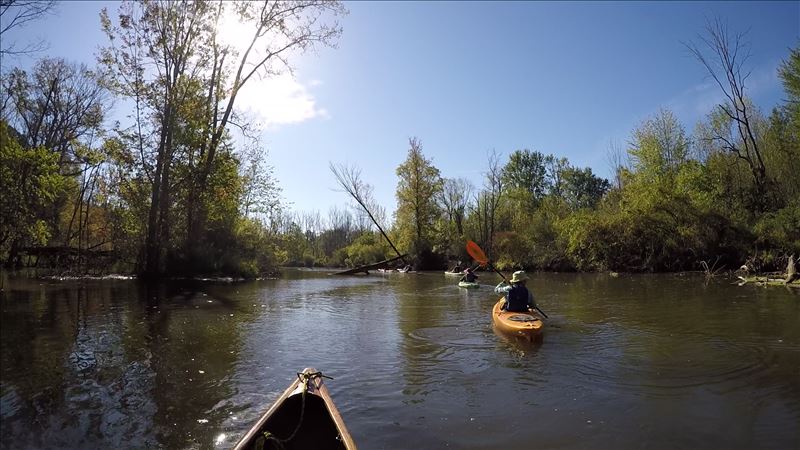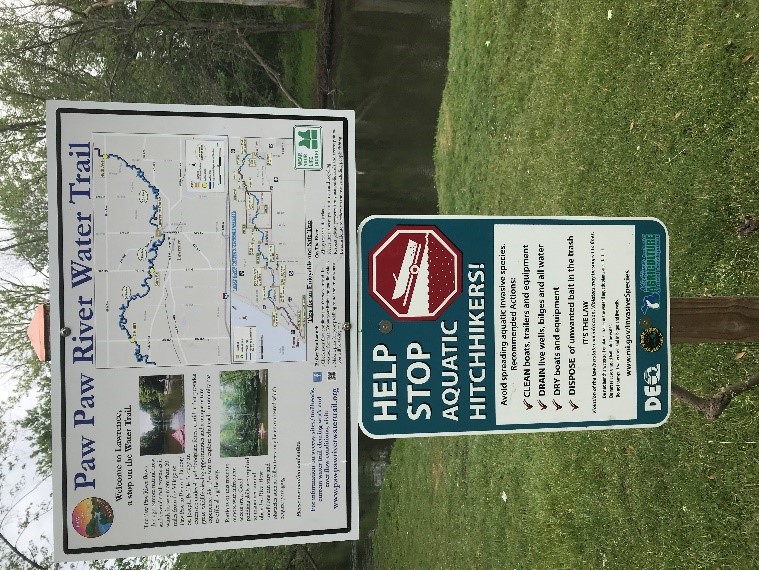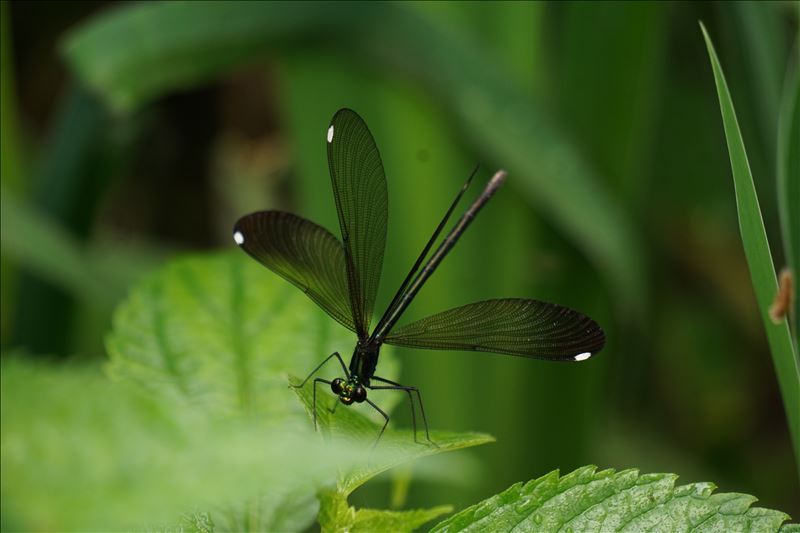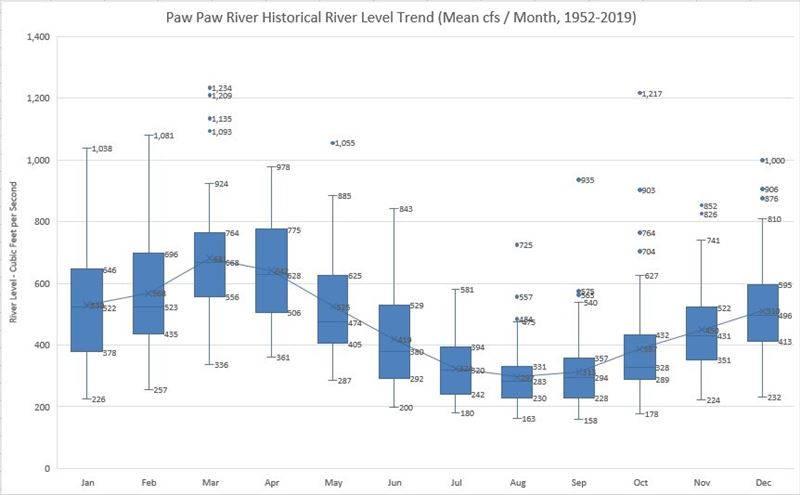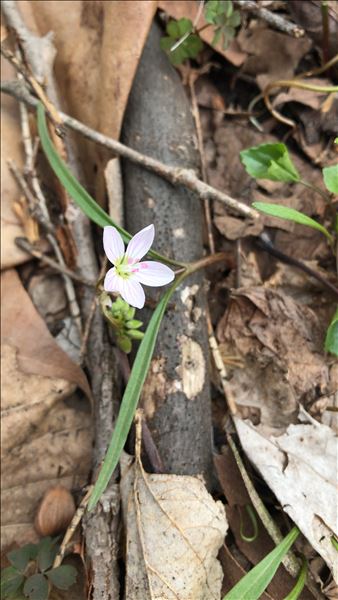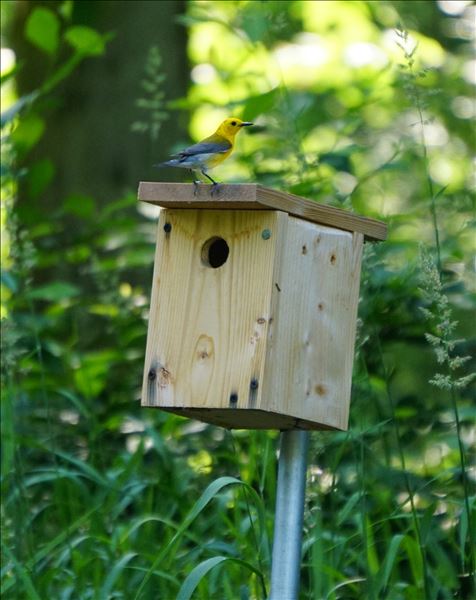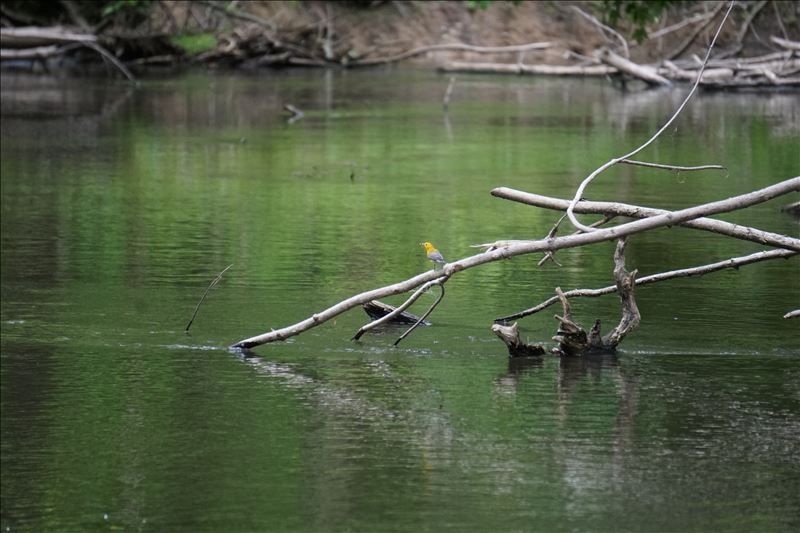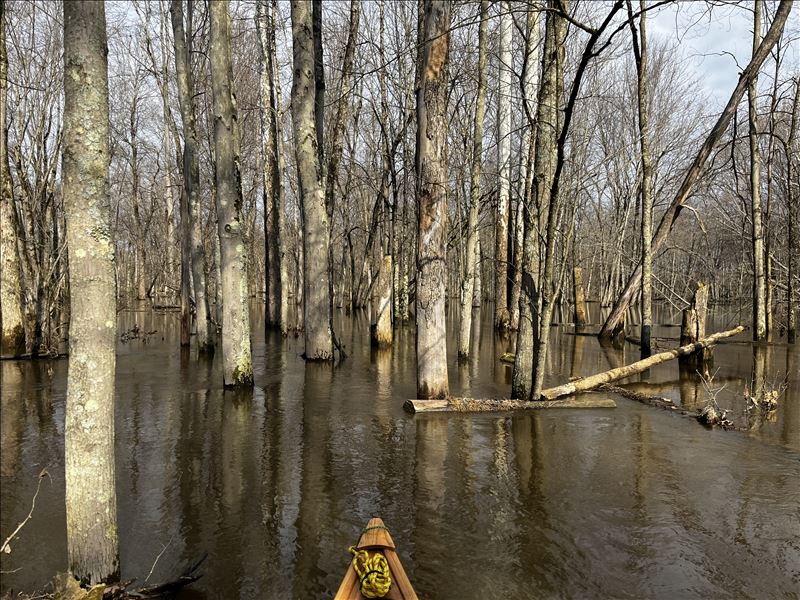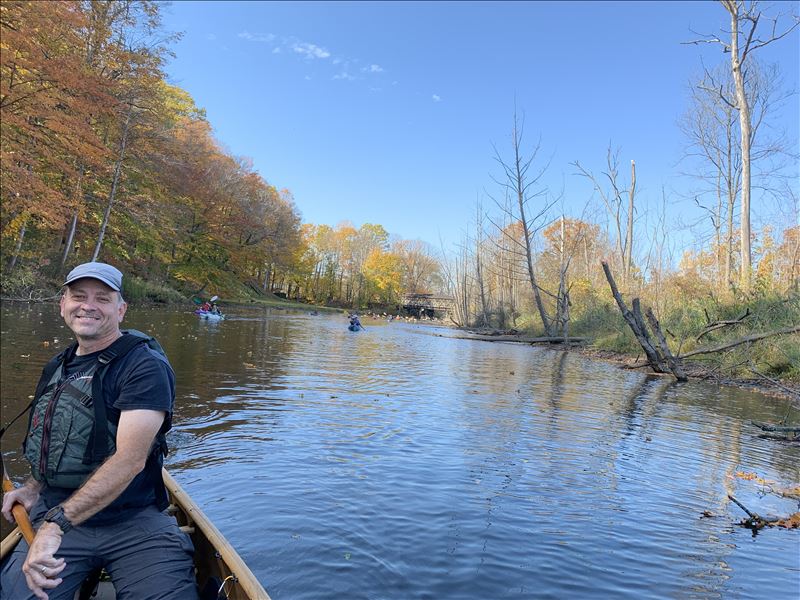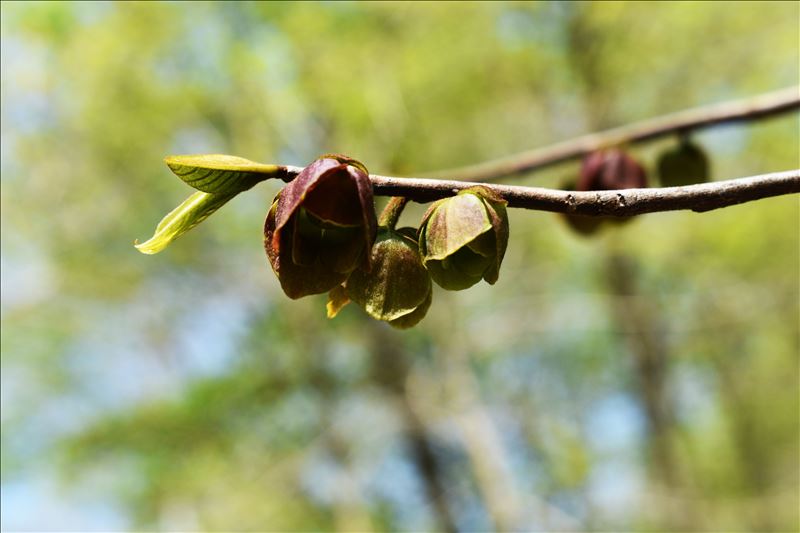Home>Let It Flow
Paddling the Paw Paw and Black Rivers (In a Solo Canoe)
Two Rivers Coalition’s mission is to help conserve, educate and advocate for the Black and Paw Paw River Watersheds. One way we help meet this mission is by encouraging recreational paddling and by hosting paddling events on the Black and Paw Paw Rivers. Check out our paddling resource page to learn more. We like to think if we can get people to play on and in our rivers, they will become advocates for healthy rivers and watersheds. As they say, we protect only what we love and it’s easy to fall in love with the Paw Paw and Black Rivers.
Two Rivers Coalition also helped create the Paw Paw River Water Trail which begins in the city of Paw Paw and follows the winding Paw Paw River some 60+ miles to the town of Benton Harbor ending as it joins the St Joseph River. The Black River is part of Michigan’s Heritage Water Trail program with recreational paddling sections near the town Bangor and then again closer to South Haven. In between is a woody “wilderness” section that is too congested with trees for recreational paddling. The Paw Paw River also has a section of waterway that is too congested with trees to paddle. This section is downstream of the 40th Street bridge and extends to the 46th Street bridge on the Paw Paw River.
In other parts of the water trails, a small path is cut through downed trees annually to help recreational paddlers enjoy the rivers without the need to constantly climb out of your boat. The cut path is generally about 4-6 feet wide to allow passage of boats while leaving most of the trees in the river. Trees that have fallen into the river play an important role in the overall health of the river and we want to leave as much as possible in the river while also allowing for recreational paddling. Trees provide crucial habitat in our rivers creating an array of micro habitats needed for many species of fish, aquatic and terrestrial insects, turtles, frogs, snakes, and birds to survive. This habitat heterogeneity helps maintain biodiversity throughout the river and its riparian corridor.
Water trail maintenance or path cutting occurs in late spring to early summer and is dependent on water levels, water temperatures and available funding. Maintaining this open water trail is challenging and not perfect as trees can fall shortly after a path is cut and water levels can impact whether a tree creates an obstruction to paddling or not. Higher water levels may allow passage over some submerged logs while preventing passage of trees hanging over the water’s surface. Low water levels generally create challenging paddling conditions as more submerged logs appear near the water’s surface.
Low water levels also allow gravel bars to emerge as paddling obstructions that need to be avoided or you will be walking your boat across them. Many of the gravel bars provide a refreshing break from your boat in the warmer summer months and allow for paddlers to explore the river closer. These gravel bars are great to cooling off during the warm summer months by sitting in the water and exploring the benthic environment which is home to many interesting insects, small fish, and freshwater mussels. Freshwater mussels are a fun species to look for and observe, but many are threatened or endangered so do not pick up and handle. Freshwater mussels play an important role in filtering out organic material from the river as well as add to the food web by providing food for other river animals. The Paw Paw River has about 17 species of freshwater mussels including the endangered Lilliput, the threatened Slippershell and several species of special concern such as Elktoe, Round pigtoe, Ellipse and Rainbow. Learn more about Michigan's Mussels.
Much of the Paw Paw River retains its natural hydrology with water levels rising and falling slowly depending on rain fall and ground water outflow. A USGS streamflow gage is located near the town of Riverside and provides a way of checking on the river water levels. The chart included shows the average monthly streamflow in cubic feet per second from 1952-2019 and highlights the seasonal cycle of water levels. The highest mean water levels are found in early spring while the lowest mean levels are found in the middle to late summer. The river’s intact natural hydrology allows the river to follow a meandering path with many bends and some occasional oxbows. Its ecologically important unfragmented floodplain forest allows the river to expand as water levels increase and overflow its low-lying banks moving nutrients and sediments further inland while reducing rapid changes (flashy) in water levels. The Black River’s water levels are flashier than the Paw Paw River’s due to its historically altered hydrology.
The Paw Paw River’s floodplain forest play an important role in harboring biodiversity as well as providing recreational paddlers pleasant stretches of protected riparian. Paddling the Paw Paw River through these nearly closed canopy floodplain forest that extend over the river is one of the true treats for our recreational river paddlers. The rivers riparian can be dotted with spring ephemeral flowers like trillium, geranium, and spring beauties in the spring to cardinal flowers, swamp mallow and many types of asters in the later seasons. Toss in the flowering trees and shrubs like dogwoods, service berries, ninebark, catalpa, cherry, and its namesake paw paw and one can rarely paddle the river without something in bloom.
The watershed’s healthy floodplain forests are home and short-term refueling refuge to many birds. It is not uncommon to hear or see 30+ species on a few hours paddle trip. One of the more notable birds is the state special concern prothonotary warbler which acts as an indicator species of healthy floodplain forest. Two Rivers Coalition started a partnership with these warblers in 2020 to help map out where they are using the river and thus where we might find the best remaining floodplain forest habitat. Healthy floodplain forests harbor many other flora and fauna including frogs, turtles, snakes, bats, and many mammals some of which are rare and threatened. They also play important roles in maintaining water quality and reducing downstream flooding in more developed areas.
As smaller recreational rivers, the Paw Paw and Black Rivers offer a more intimate river experience for paddlers but in exchange it also adds more challenges. The more intimate river experience can be very rewarding as paddlers get an up-close emersion of the river’s riparian habitats and its biodiversity along with its clear waters showing the changing benthic environments just beneath the boat. The woody debris adds an element of habitat heterogeneity where common water snakes and northern map turtles bask in the sun as you float within arm’s reach. To fully enjoy this more intimate river experience with the added challenges you need to be able to maneuver your boat easily through the trees and shallow gravel bars.
I find the work and paddling skills needed to maneuver effortlessly through the trees, over the shallow gravel bars and around the many river bends adds to the pleasure of paddling the Paw Paw River. It is not a river for effortless floating with a drink in hand as I have seen many times on rivers in Michigan. In many ways, the Paw Paw River is a great river for those who enjoy the art and skill of paddling while also soaking up the scenic beauty of a natural river and its mostly untouched riparian and thriving biodiversity. It is a river that changes character nearly every time you paddle it as its water levels naturally ebb and flow and the flora and fauna live out their seasonal life cycles.
There are a handful of details to consider when deciding to become a regular Paw Paw and Black River paddler. Some of these details center around your boat and its design while others on your skills and abilities. Because of the many meanders and tree falls, maneuverability of your boat is very important (if not the most important). It is not uncommon to have to maneuver your boat from one bank to the other and back in a very short distance all the while trying to line up for small slots in cut trees and avoiding overhanging branches with spider webs (if those creep you out). A longer boat in general will make this more challenging while a shorter boat less challenging. Also, a boat with more rocker or curve along the bottom or hull will make maneuvering easier. The tradeoff for a shorter, more curved or rockered boat is that it requires more effort and skill to paddle straight.
A narrower boat with less height or depth may also be of benefit in maneuvering through the tree falls where gaps between trees and water surface as well as cut paths can be small and always changing. The trade-offs here are possibly a less stable boat and risk of water entry over the sides. If you are kayaking, you are likely using a double-bladed kayak paddle while in a canoe you are likely using a single bladed canoe paddle. A longer kayak paddle can make boat control easier but may also be difficult to use in amongst the tree falls where a single bladed canoe paddle is less encumbered. A composite kayak or canoe can readily slide over slightly submerged trees but may also be at a greater risk of damaging the hull. A plastic kayak is less likely to be damaged but also offers a little more resistance when paddling over a slightly submerged tree. Composite boats are also lighter in weight than plastic boats which may allow for easier pulling / lifting over logs that can’t be paddled around. Getting in and out of a canoe to climb onto a tree fall and pull your boat over is much easier than a kayak for many of us older paddlers.
There are always tradeoffs when choosing a boat and paddle. It has been said that there is no such thing as a perfect boat, however I would argue that a well-made 14-foot (or maybe 12) solo canoe in the hands of an avid paddler is an ideal boat for the Paw Paw and Black Rivers. Most 14-foot solo canoes are about 30 inches wide and 12-14 inches in depth with a moderate amount of rocker. When leaning the canoe, you can create more rocker to ease maneuvering for quick turning (you can also do this with some kayaks with a skirt on). A skilled paddler can paddle forward with minimal turning using appropriate corrections to overcome the boats rocker when on the river’s straight aways and leverage the rocker during the many bends and maneuvering around trees.
The solo canoes shallow depth and narrow width make getting the canoe through the trees easier than wider, deeper boats. With a wide, short single bladed paddle (50-52 inches) you can get a good grip on the water while minimizing digging into the river bottom or its submerged trees while also avoiding overhanging trees. Overtime, a solo canoe paddler can learn and leverage an array of paddling strokes including draws, prys, Cs and Js in combination with boat and body position to skillfully maneuver a canoe through some of the most challenging tree falls all the while enjoying every bit of it. With time you will seek out the more challenging conditions to improve your paddling skills and fun on the river.
It is worth noting that one of the more popular and stable ways to paddle a solo canoe is with knees on a pad and butt on the seat. Some find their knees or ankles cannot sustain that position for long lengths of time, thus a solo canoe may not for everyone. A shorter kayak is also a suitable boat and many now prefer the stand-up paddle boards. However, a short solo canoe with a single bladed paddle is often overlooked as a paddling option and maybe the ideal boat for those who prefer the rewarding challenges of the Paw Paw and Black River’s intimate paddling experiences.
In the end we want you to enjoy your time on the Paw Paw and Black Rivers, seek to become a better paddler, and desire to learn more about these rivers and what makes them special. Fall in love with the Paw Paw and Black Rivers as they both need more friends and advocates.
